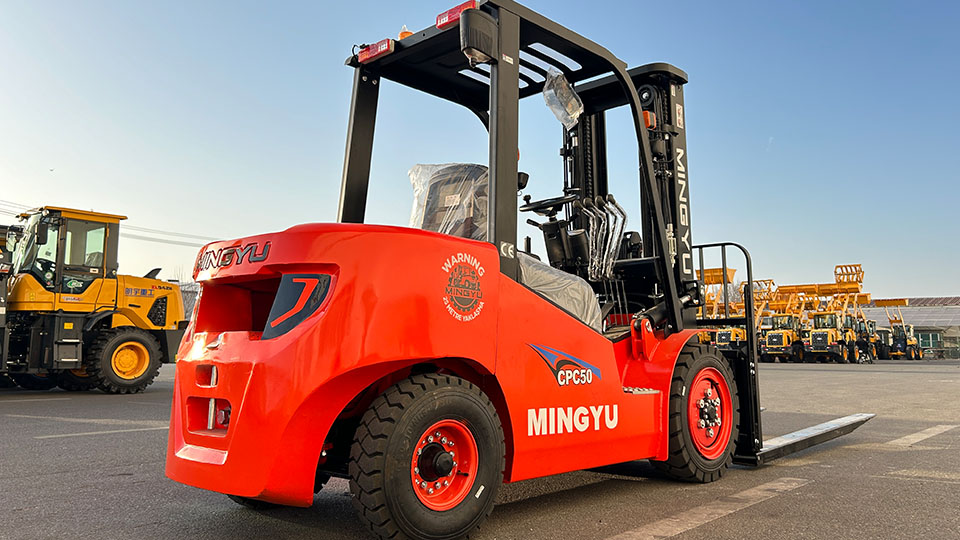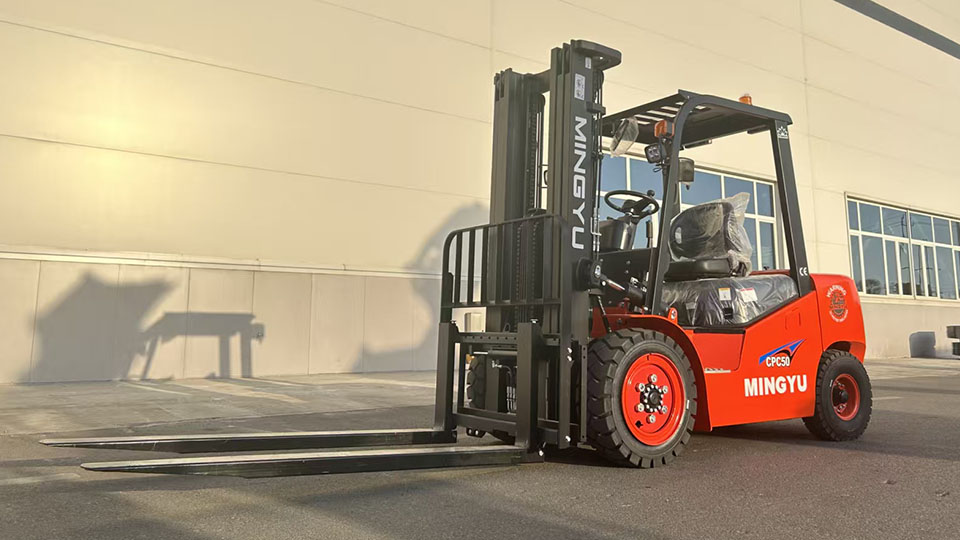
The Definitive Guide to Forklift Certification: Where to Get It and What to Expect
In the modern world of logistics, manufacturing, and warehousing, the forklift is an indispensable machine. It's the workhorse that moves goods, stacks pallets, and ensures the smooth flow of the supply chain. But to operate one, you can't just hop in and go. The Occupational Safety and Health Administration (OSHA) mandates that all powered industrial truck operators—a category that includes forklifts—must be properly trained and certified. This isn't just a formality; it's a critical safety measure to prevent the thousands of serious injuries and fatalities that occur in forklift-related accidents each year.

So, where do you get this essential certification? This comprehensive technical article will serve as your guide, breaking down the requirements, exploring the different training options available, and providing a clear roadmap to becoming a certified forklift operator.
Understanding the OSHA Mandate: The Three Pillars of Certification
Before diving into the "where," it's crucial to understand the "what." OSHA Standard 29 CFR 1910.178 lays out a clear, three-part training process that every operator must complete. No single course or online certificate can fulfill all these requirements alone.
Formal Instruction (The "Classroom" Portion): This is the theoretical part of the training. It can be delivered through a variety of methods, including online courses, video presentations, classroom lectures, and interactive computer programs. This section covers the fundamental principles of safe forklift operation, including:
Types and classifications of forklifts (e.g., sit-down counterbalance, reach trucks, telehandlers).
Vehicle dynamics and stability principles.
Understanding the data plate and its importance.
Pre-operational inspections (the "daily check").
Proper fueling and battery charging procedures.
OSHA regulations and workplace safety protocols.
Practical Training (The "Hands-On" Portion): This is where you get behind the wheel. The practical training must involve hands-on exercises and a demonstration of safe operation under the supervision of a qualified trainer. This portion is essential because it allows you to apply the theoretical knowledge to a real-world setting. You will learn to:

Maneuver the forklift in tight spaces.
Stack and unstack loads.
Navigate around obstacles and pedestrians.
Operate the hydraulic controls for lifting and lowering loads.
Master the proper use of attachments.
Performance Evaluation: This final step is an official assessment of the operator's skills. The employer, or a qualified person designated by the employer, must observe and evaluate the operator's performance to ensure they can operate the forklift safely in the specific workplace environment. This evaluation validates that the operator is not only trained but also competent to handle the equipment on the job.
The Three Primary Avenues for Certification
Now that you understand the requirements, let's explore the most common places to get your forklift certification.
1. The Online Certification Route
Online training programs have become one of the most popular and convenient ways for individuals to complete the formal instruction portion of the certification.
How it Works: These courses are typically self-paced, allowing you to learn from home on your own schedule. The course content is delivered through videos, interactive quizzes, and written materials. Upon completion of the formal instruction and a final exam, you receive a printable certificate and a wallet-sized card.
Cost and Duration: Online courses are generally the most affordable option, with prices ranging from $30 to $100. The duration is often a few hours, but you can take as long as you need to complete the course and pass the exam. Many providers offer unlimited retakes.
The Crucial Caveat: It is vital to remember that an online certificate alone is not sufficient for full OSHA compliance. The online course only fulfills the "formal instruction" requirement. You must still receive the hands-on practical training and a performance evaluation at your place of employment. A reputable online provider will make this very clear, stating that the final certification is issued by the employer after all three requirements are met.
Where to Find Them: A quick online search will reveal numerous OSHA-compliant online training providers. Look for companies with a strong reputation, clear explanations of the certification process, and positive reviews.
2. In-Person Training Facilities
For those who prefer a more traditional, hands-on learning experience or for new operators who need to learn the basics, an in-person training facility is an excellent choice.
How it Works: These facilities provide both the formal classroom instruction and the practical hands-on training in a single, comprehensive program. The course is led by a certified instructor who can provide real-time feedback and guidance. The training often includes an obstacle course or a simulated warehouse environment where you can practice a variety of maneuvers.
Cost and Duration: In-person training is more expensive than online courses, typically ranging from $100 to $300. The courses usually take a single day to complete, but some may be spread over several days depending on the program's intensity and the types of equipment covered.
The Advantages: This method provides the most complete training experience, especially for new operators. You get direct access to an expert instructor and immediate, supervised practice on the equipment. This ensures you are comfortable and proficient before you even start a job.
Where to Find Them: You can find these facilities through:
Local Community Colleges or Trade Schools: Many vocational schools offer forklift training as part of their industrial skills programs.
Forklift Dealerships and Equipment Rental Companies: These businesses often have dedicated training centers. Since they sell and rent the equipment, their trainers are highly knowledgeable.
Specialized Training Centers: Many companies exist solely to provide OSHA-compliant training for a variety of industrial equipment.
3. Employer-Provided Training
This is the most common way for experienced workers to get certified or re-certified. If you are hired for a job that requires a forklift license, your employer is legally obligated to provide the training.
How it Works: The employer will either use an in-house, qualified trainer or hire an external training service to conduct the formal instruction and practical evaluation. The training is tailored to the specific type of equipment and the hazards present in that particular workplace.
Cost and Duration: The cost to the employee is typically zero. The employer pays for the training as a legal requirement. The duration can vary from a few hours for a refresher course to a full day for initial certification.
The Advantage: This is the most practical and relevant form of training. It ensures that you are certified on the exact make and model of forklift you will be using and in the specific environment you will be working in. This type of site-specific training is a mandatory part of the OSHA standard.
State-Specific Requirements and Recertification
While OSHA sets the federal standard, some states have their own, more stringent requirements. For example, states like California operate under their own OSHA-approved state plans, which may have additional regulations. It's always a good idea to check with your local state's Department of Labor or Occupational Safety and Health division to confirm any specific requirements.
Recertification: OSHA requires that all forklift operators undergo a performance evaluation at least once every three years. Refresher training is required sooner if:
The operator is involved in an accident or a "near-miss" incident.
The operator has been observed operating the forklift in an unsafe manner.
The operator is assigned to operate a different type of forklift.
There are changes in the workplace conditions that could affect safe operation.
The Takeaway: A Multi-Part Process
Getting a forklift certification is not about receiving a simple card. It is a multi-part process designed to ensure safety and competency. The best approach for most people is a combination of methods:
Start with the Formal Instruction: Take an affordable and convenient online course to complete the theoretical portion. This gives you a solid foundation and a certificate you can present to potential employers.
Get Hands-On Training: Once hired, the employer will provide the mandatory practical training and the final performance evaluation.
Maintain Your Certification: Be prepared for a formal evaluation every three years to maintain your compliance and skills.
By following this path, you will not only satisfy all legal requirements but, more importantly, you will become a safe, competent, and highly valuable asset to any company that relies on the power of a forklift. Your certification is not just a piece of paper; it's a testament to your commitment to safety and professionalism in a fast-paced and demanding industry.
Name: selena
Mobile:+86-13176910558
Tel:+86-0535-2090977
Whatsapp:8613181602336
Email:vip@mingyuforklift.com
Add:Xiaqiu Town, Laizhou, Yantai City, Shandong Province, China